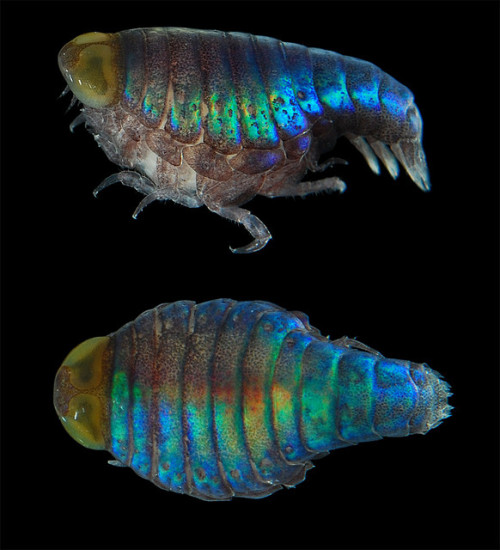revretch:revretch:dozen-times-vanished:wiwaxum:Scientific photography by Arthur Anker1.- Crab megalo
revretch:revretch:dozen-times-vanished:wiwaxum:Scientific photography by Arthur Anker1.- Crab megalopa (Carpilius sp ?)2.- Stilapex montrouzieri (Moorea, French Polynesia)3.- Euthamneus cf rostratus (Moorea, French Polynesia)4.- Stauromedusa (French Polynesia)5.- Pilumnus vespertilio (Madagascar)6.- Notospermus tricuspidatus (Moorea, French Polynesia)7.- Diopatra sp8.- Galeommatid bivalve, possibly Scintilla sp9.- A thalassematid echiuran (Madang, Papua New Guinea)10.- Male ovigerous sea spider (Pycnogonida)http://www.flickr.com/photos/artour_a/sets/72157623477677107/1. A baby crab!2. S N A I L3. An amphipod, a common order of marine crustaceans4. This looks kinda like an anemone, but it’s actually a jellyfish that lives upside down, attached to the sea floor by a stalk! All jellyfish start out their lives in this kind of anemone-like polyp phase, but this and related “stalked jellyfish” just never grow out of it!5. I literally couldn’t tell what the fuck kind of animal this was but apparently it’s the Common Hairy Crab! The hairs trap dirt and stuff for it to use as camouflage!6. Ribbon worm - no idea what the glowing is, but these things have crazy proboscises almost as long as their bodies that they can launch out of their mouths7. A kind of bristle worm that lives in hard tubes they build for themselves on the seafloor8. Y’all what the FUCK is up with this clam I cannot find any information about it. Why is it Like That9. Spoon worm! Dunno much about them but that’s a real cute name10. A sea spider! Not actually a spider, or even particularly closely related to any other arthropod species. Extremely good boysThank youuu for the summaries, I did not feel like looking up every one myself!!Okay did some research into the ones you weren’t sure about and found some very cool facts!!6. This ribbon worm just has a white line as a pattern on its head, not sure there’s a particular reason for it, BUT the zigzags correspond to its chemosensory cephalic slits, which I did not know ribbon worms had!8. Okay, this I did know about–some clams brood their embryos in these sacs, then a passing fish eats it, and the embryos grow parasitically inside the fish until they reach maturity! The sacs get REALLY weird-looking, even looking identical to prey fish! You can read more here: https://bogleech.com/bio-clampirism.htmlHOWEVER, what’s REALLY cool is that the family this particular clam belongs to has a genus in it called Waldo, which crawls around on sea urchins!!! How wild is that??!!! https://en.wikipedia.org/wiki/Waldo_(bivalve)Article here (yes, they named it after Where’s Waldo):https://blog.nationalgeographic.org/2013/08/19/wheres-waldo-off-the-pacific-coast/ -- source link
Tumblr Blog : wiwaxum.tumblr.com









